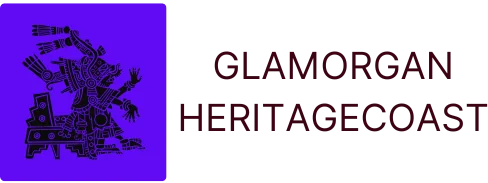Popping culture is more than just a fleeting trend; it’s a vibrant tapestry woven from the threads of music, fashion, and social media. From viral dance challenges to the latest TikTok sensations, this dynamic phenomenon captures the pulse of society in real time. It’s where the quirky meets the cool, and the unexpected reigns supreme.
Table of Contents
ToggleOverview of Popping Culture
Popping culture serves as a vibrant tapestry woven from music, fashion, and social media influences. This dynamic phenomenon captures the spirit of contemporary society through its ever-evolving expressions.
Definition and Origins
Popping culture refers to the contemporary trends that shape entertainment and lifestyle. Originating in the late 20th century, it draws from various cultural influences, including hip-hop and street art. The genre of dance known as popping emerged in the 1970s in California, rooted in African American culture. As dance styles became more popular, they paved the way for broader cultural movements, influencing not just performance art but also fashion statements and music trends. Elements like viral challenges create a shared experience among diverse global audiences.
Evolution Over Time
Popping culture has undergone significant transformation since its inception. Initially focused on dance, it expanded to encompass social media platforms like Instagram and TikTok. These platforms fueled rapid dissemination of trends, allowing for worldwide participation. Retrofuturism and nostalgia often inform new waves, blending past styles with modern sensibilities. The incorporation of memes and internet challenges showcases how digital communication shapes contemporary trends. As a result, the intersection of creativity and technology continues to redefine what popping culture means in today’s society.
Key Elements of Popping Culture

Popping culture consists of various dynamic components, contributing to its unique character. Key elements include innovative dance styles and gripping music and fashion influences.
Dance Styles and Techniques
Popping originated from the late 20th century dance scene, primarily in California. This dance form emphasizes jerky movements, often referred to as “pops,” which are essential for creating engaging performances. Street dance styles, such as locking and robot dance, fuse into popping, enriching its visual appeal. Workshops and competitions promote skill development among dancers, allowing them to showcase their creative interpretations. Viral challenges on social media platforms inspire new generations, ensuring that popping continues to evolve and remain relevant.
Music and Fashion Influences
Popping culture draws heavily from hip-hop and electronic music genres, creating high-energy beats that fuel choreography. Artists like Skrillex and Deadmau5 have influenced the electronic scene, providing tracks perfect for popping performances. Fashion plays a crucial role, with neon colors and oversized clothing often associated with this culture. Iconic brands like Adidas and Fila resonate within the popping community, encapsulating its identity. Trendsetters on social media platforms mix styles, merging retro and contemporary elements, further enriching the aesthetic landscape of popping culture.
Popping in Entertainment
Popping has made significant strides in entertainment through various mediums. Film and television notably showcase this dynamic dance style, reflecting its cultural relevance.
Popping in Film and Television
Dance films often highlight popping as a central element, captivating audiences with its energetic style. Movies like “Step Up” and “You Got Served” feature dancers who utilize popping techniques, bringing a fresh, visual flair to the screen. Television shows also embrace popping, with series such as “So You Think You Can Dance” showcasing competitions that spotlight this genre. Iconic performances by professional dancers elevate the visibility of popping, inspiring other artists. Documentaries exploring hip-hop and street culture further illuminate its impact on the entertainment industry.
Popping in Music Videos and Concerts
Music videos frequently integrate popping to create visually engaging narratives. High-energy tracks from artists like Missy Elliott and Usher display dancers executing intricate popping movements, enhancing the overall experience. Concerts also feature popping prominently, as performers often incorporate this style into their routines, captivating live audiences. Collaborative efforts between choreographers and musicians help bridge the gap between music and dance, resulting in memorable performances. Festivals celebrate popping culture by inviting skilled dancers to showcase their talent, drawn by the rhythms of popular music.
Popping Culture Worldwide
Popping culture flourishes across various regions, adapting to local influences while maintaining its core essence.
Regional Variations
Cultural expressions of popping differ significantly around the globe. In Japan, for example, dancers incorporate elements of robotics and anime-inspired moves, enhancing their performances with distinct visual flair. European popping scenes blend hip-hop styles with a strong emphasis on creativity, often showcasing extravagant costumes and theatrical elements. The influence of African dance styles appears in popping due to the shared focus on rhythmic movement and storytelling through dance. Latin American countries embrace salsa influences, adding flair and sensuality to popping routines. Each regional variation contributes unique characteristics, resulting in a rich mosaic of styles that continues to evolve.
Global Communities and Competitions
Global communities thrive through online platforms and in-person gatherings dedicated to popping culture. Social media enables dancers to connect, share techniques, and promote events worldwide. Competitions like the World Hip Hop Dance Championship and various local battles highlight the best talents and encourage participation across skill levels. These events often feature panel judging and audience voting, creating a dynamic atmosphere where dancers showcase their creativity. Workshops led by expert dancers facilitate skill development and foster camaraderie among participants. Consequently, these communal experiences not only enhance individual abilities but also solidify a sense of belonging within the global popping culture tapestry.
Popping culture continues to thrive as a vibrant expression of creativity and connection. Its ability to adapt and evolve reflects the dynamic nature of society today. By blending various influences and embracing new technologies, it remains relevant and engaging for audiences worldwide.
As it intertwines music, dance, and fashion, popping culture fosters a sense of community among enthusiasts. The global exchange of ideas and styles enriches this cultural phenomenon, ensuring its legacy lives on. Through competitions and social media, it inspires future generations, making popping culture not just a trend but a lasting movement.










